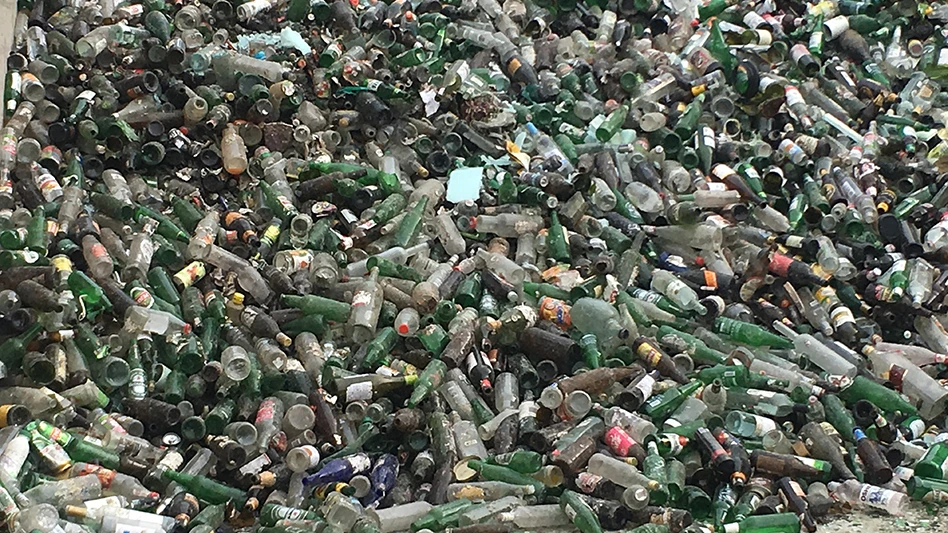
Recycling Today archives
The president of the Arlington, Virginia-based Glass Packaging Institute (GPI) has delivered testimony to the New York state legislature on a proposed expansion of the state's beverage container deposit-return system (DRS), or bottle bill, backing the efforts of the proposal’s legislative sponsors.
GPI President Scott DeFife sent written testimony to the New York State Senate and Assembly Committees on Environmental Conservation, demonstrating support for State Senate Environmental Committee Chair Peter Harckham and Assembly Environmental Conservation Committee Chair Deborah Glick and urging them to usher the bill into law.
“GPI is supportive of expanding the state’s bottle bill to capture all beverage containers, especially as serious consideration is being given to establishing a packaging-focused extended producer responsibility (EPR) program,” DeFife says.
He points not only to increasing collection rates and reducing energy consumption as goals of the proposed expansion but also efforts to improve the quality of the discarded glass collected.
“Most importantly, it is critical to focus on the quality of the commodity material,” DeFife says. “The quality of the glass recovered through the deposit-return (bottle bill) program is always much higher than any glass recovered through the curbside commingled recycling system, even when there is a dual-stream system in place in municipalities such as New York City.”
GPI calls the glass container manufacturing industry “a cornerstone of the local economy in New York and across the country." The association points to two glass container manufacturing plants in New York—O-I Glass in Auburn and Anchor Glass in Elmira—that produce “millions of bottles daily for local and regional markets, creating jobs.”
“Recycled glass is a key component of the manufacturing process,” DeFife says in his testimony. “The United States [glass container] industry purchases about 2.3 million tons of recycled glass each year, and the average bottle or jar contains one-third recycled glass.”
On the energy consumption front, DeFife says, “For every 10 percent of recycled glass added to the batch mix, energy usage can be reduced two to three percent, with additional corresponding reductions in greenhouse gas emissions.
“When you add the benefit of what is a better than 1-to-4 offset of raw materials saved by using recycled glass [versus virgin materials] to make new containers, it is clear that using recycled glass has significant benefits to the environment of the region and should be prioritized.”
GPI supports Harckham and Glick’s efforts to pass modified bottle bill legislation in New York and hopes other states follow New York’s lead in this "crucial area."
Latest from Recycling Today
- BMW Group, Encory launch 'direct recycling’ of batteries
- Loom Carbon, RTI International partner to scale textile recycling technology
- Goodwill Industries of West Michigan, American Glass Mosaics partner to divert glass from landfill
- CARI forms federal advocacy partnership
- Monthly packaging papers shipments down in November
- STEEL Act aims to enhance trade enforcement to prevent dumping of steel in the US
- San Francisco schools introduce compostable lunch trays
- Aduro graduates from Shell GameChanger program





